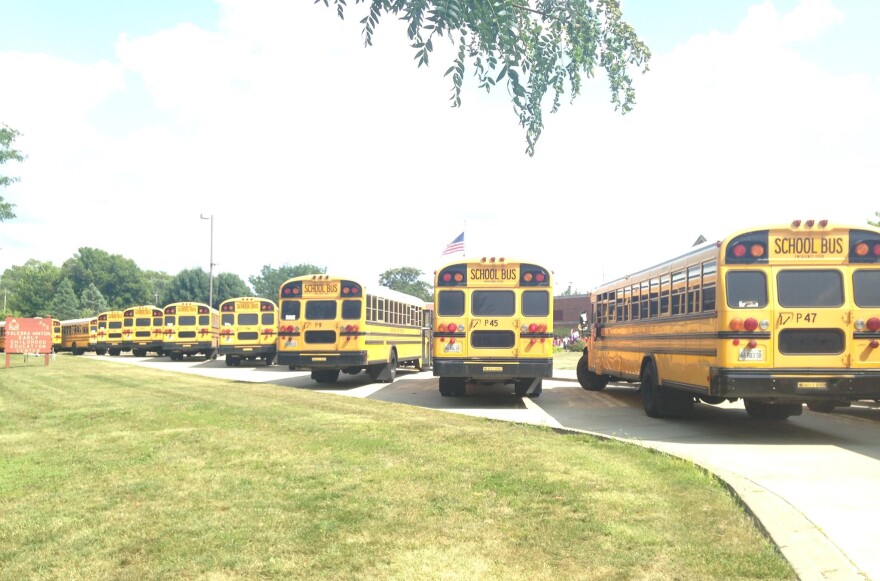Josh Collins believes Peoria Public Schools could use as many as 25 additional bus drivers heading into the next school year.
Collins, District 150’s transportation director, said the return to a two-bell daily schedule and the recently approved modified calendar will require more than the district's current 55 bus drivers.
“We'd like to get to 80,” said Collins. “That would cover any routes that we will have for next year. We're anticipating somewhere around 66-ish routes; it's hard to say this early in front of the school year. But 80 would give us enough drivers for that and then any absenteeism or anything that may occur, give us all the padding that we need. At a minimum, I'd like to see us somewhere around 70.”
The District 150 school board recently improved a pay raise for all bus drivers, with the entry level starting rate now at $20 an hour. They also doubled the sign-on bonus to $1,000. Collins said the increases were necessary to stay viable in the job market.
“As the wages here locally continued to increase because of the competition for employees, we realized that we were still behind,” he said, noting the previous base rate was $17.44 per hour. “We were below the national average for school bus drivers and below where we needed to be able to recruit. So in order to maintain competitiveness, we decided we needed to go at least to $20. That's a pretty good wage for folks that are wanting to get into school bus driving.”
Collins said even before the onset of the COVID-19 pandemic, the district had started to address increasing turnover through a concerted effort toward driver retention, with more employee incentives and appreciation events.
“We realized that just continuously bringing people in, training them and then losing them was not cost-effective. It's not doing anything; it's not helping us build better employees, and it's not beneficial for anyone,” he said.
Other incentives being offered to existing employees include a $500 bonus for recruiting a new driver, and a $1,000 transfer bonus for current transportation monitors who wish to become drivers.
Collins said PPS is really competing more with other industries for entry-level workers than it is with other school districts seeking drivers, because his department has a notable advantage.
“You don't have to have prior experience to come to us,” said Collins. “For a lot of districts, you're responsible for getting your own permits and things like that. We actually take an individual with a Class D license, bring them in the door, we start training and paying them as an employee, and we take them through the entire process for obtaining all of the licenses and permits that they need. So it's a little bit different than what surrounding districts do, but what that does is that allows us to actually hire more folks.”
Collins said being a school bus driver can be very rewarding, especially through the interaction with the students. But he said the struggle to attract drivers is not unique to District 150.
“Not only are we experiencing a nationwide labor shortage, but in addition to that, we're experiencing a nationwide school bus driver shortage. So Peoria Public Schools is not alone here,” he said.
Apart from the need for more drivers, Collins said the return to the two-bell schedule shouldn’t have any adverse effects on the transportation department.
“In certain aspects, it becomes a little bit easier for the drivers because they don't have as many kids,” he said. “But the routes tend to be slightly longer with the two-bell schedule because we have a little bit more time between the bells to run the routes. So that's going to be the biggest differences, the need for more drivers and also the arrangement on how we do routes. For us, the biggest impact is just our logistics.”


